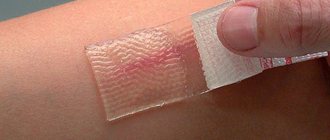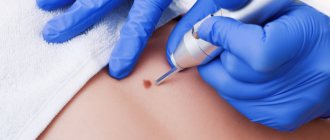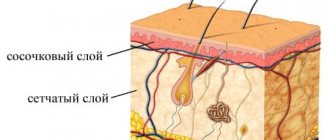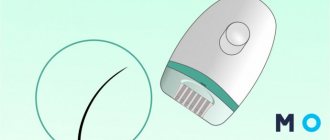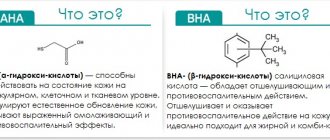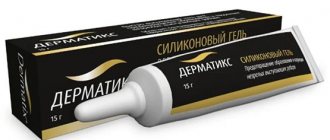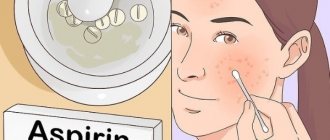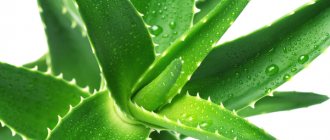Scars almost always stand out due to their elevation above the surface of the skin and a change in color - they can be red, pinkish, or with a brownish tint. If a fresh scar is regularly exposed to the sun, it will become noticeable and rough.
- How to whiten a scar
- How to reduce a scar
- How to whiten spots on skin
You may be interested in: How to remove inflammation from a pimple
Question “This concerns my appearance. » — 2 answers
How to remove facial scars at home quickly and permanently?
“How to remove scars on the face at home using folk remedies?”, “How to remove acne scars from the face at home” – is this a familiar situation?
Very much for us! We know how difficult it is sometimes to find the time and money to see a professional. But you always want to look beautiful, well-groomed and fresh. You can trust the old, good advice of our grandmothers. But let's be honest, not everyone dares to try some strange life hacks from the Internet like castor oil or vegetable lotions.
Don’t switch, below we will tell you about methods that really work.
Today our goal is to teach you how to remove scars and scars at home or make them less noticeable.
Content
- What is the difference between a scar and a scar?
- How does scar tissue differ from healthy tissue?
- Causes of scars
- What are the types of scars?
- How to get rid of a scar on your face at home?
- Removing scars using pharmaceutical products
- Removing Scars with Home Dermabrasion
- Removing scars on the face with peelings and scrubs
- Removing scars with folk remedies
- Care after the home procedure
- Rules to follow if you decide to remove a scar yourself
- 6 professional ways to correct scars
- Question answer
Effective methods of disposal
Before you start dealing with scars on your own, you should consult a dermatologist.
He will be able to select the most effective treatment method, depending on the maturity and type of scar formation.
Based on the type and nature of formation, there are 4 types of scars:
- Normotrophic scars. They are formed as a result of the healing of shallow wounds, burns, surgical operations with incisions along the skin folds (for example, a postoperative scar on the abdomen from a cesarean section or appendicitis). Due to the structure and pale shade of scars, some of them are almost invisible on the body, which makes it easy to remove such scars.
- Atrophic scars. They are a consequence of such ailments as acne (post-acne), acne, smallpox, chickenpox, as well as animal bites and unsuccessful mole removal. This type of scar also includes stretch marks (stretch marks). Often, this type of scar is a serious aesthetic drawback and requires long-term treatment under medical supervision.
- Hypertrophic scars. They are formed as a result of excessive collagen production. The causes of formation can be third-degree burns, serious lesions of large areas of skin, long-healing wounds and even heredity. The scars are raised nodules of a rich flesh-colored or pink color. In some cases, the only way to get rid of such scars is through surgical excision.
- Keloid scars. The least aesthetic type of scars. In their shape they can resemble a wart or tumor of various shades of red. They arise due to an incorrect reaction of tissues to the injury. A distinctive feature is that a keloid scar also affects the healthy tissue surrounding the injured area. They may appear as a result of a reaction to ear piercings, piercings, or tattoos.
Knowing what type of scar appears, you can choose a method for removing it.
Pharmacy products
Pharmacological companies have many drugs in their arsenal designed to reduce or completely eliminate scars. We will tell you about effective products that can be bought at any pharmacy.
- Clearvin is an Ayurvedic ointment based on natural Indian herbs. Despite its natural composition, the product is effective in the fight against atrophic and normotrophic scars, as well as age spots.
- Dermatix is a transparent gel based on polysiloxanes that does not penetrate deep into the skin, but works only with its upper layers. The gel is perfect for people who are not recommended to use chemicals, and for pregnant women.
- Contractubex - the gel contains both chemical elements and natural ones (for example, onions). It is one of the popular pharmaceutical removal products. Regenerates the skin well and works on fresh scars.
- Fermenkol gel – effectively smooths out marks. According to expert reviews, this drug actively affects keloid and hypertrophic scars due to its collagenolytic property (breaks down collagen fibers).
- Strataderm cream penetrates well into the upper layers of the epidermis and softens scar tissue, preventing it from thickening. Excellent for removing fresh scars.
Cosmetic procedures
Cosmetic procedures are in particular demand in the fight against scars. Every year, leading cosmetology clinics offer us more and more choice in the arsenal of procedures aimed at removing scars. Let's look at the most popular ones.
| Procedure | Methodology | Indications | Result |
| Chemical and fruit peeling | With the help of active ingredients (retinol, salicylic acid, lactic and fruit acids), the top layer of scar tissue is removed and the skin regeneration process is stimulated. | Atrophic scars at an early stage, keloid and hypertrophic. | The skin texture is evened out and the scar is lightened. |
| Dermabrasion | The surface layer of skin is mechanically removed using special cosmetic cutters and brushes. | Hypertrophic and normotrophic. | The scar discolors and becomes almost invisible. |
| Cryodestruction | Cauterization with liquid nitrogen. | Keloid and hypertrophic scars. | A scar is formed on the affected area, which is compared to healthy skin within six months. |
| Photo correction | Light rays acting on scar tissue destroy pigment. | Normo- and hypertrophic. | Whitening and softening marks. |
| Laser resurfacing | Under the influence of the laser, collagen and elastin are produced, followed by evaporation of pathological tissue. | All types of scars. | Healthy tissue forms in place of the scar. |
| Filling the scar with hyaluronic acid or collagen | A drug is injected into the damaged areas of the tissue to fill the unevenness. | Atrophic scars. | Temporary smoothing of the skin structure (effect from 1 to 6 months, depending on the condition of the skin). |
| Mesotherapy | Injections with a vitamin composition are administered locally, stimulating collagen production and improving blood microcirculation. | Atrophic and normotrophic. | The skin texture is slightly evened out, its own collagen fills uneven areas. |
Whatever method you decide to get rid of scars, you need to remember the contraindications. If you have skin diseases, herpes or acute inflammatory processes, it is not recommended to undergo the above procedures. In such a case, it is necessary to consult with a cosmetologist and choose another option for treating scars.
Surgical methods
The surgical method of scar removal is used quite rarely, if other methods have failed to cope with their task. Scar excision occurs in several ways:
- an intradermal cosmetic suture is applied;
- the contour of the scar changes;
- A skin grafting procedure is performed on the affected area.
This procedure can only be performed as prescribed by a doctor. Indications for surgical excision are the formation of keloid and hypertrophic scars affecting large areas of the skin.
How does scar tissue differ from healthy tissue?
- The difference between scar tissue and healthy tissue is that in healthy tissue, collagen fibers are located randomly, chaotically, and most often crosswise. This arrangement of fibers in relation to each other creates a uniform skin structure. This difference is clearly visible in the microscope photograph below.
Under a microscope, you can see the difference in the arrangement of collagen fibers in healthy tissue (left) and scar tissue (right).
- In scar tissue, the fibers are located parallel to each other - longitudinally in one direction.
- Charm fabric lacks hair follicles and sebaceous glands.
The schematic drawing shows: On the left is healthy tissue, and on the right is tissue with a scar. Scar tissue lacks hair follicles and sebaceous glands. Collagen fibers in healthy tissue are arranged crosswise, while in scarred tissue they are arranged in parallel.
Surgical: go under the knife
One of the radical ways to deal with scars is to visit a surgeon. This method is suitable for correcting all types of scars, except keloids. The latter often relapse. If the scar is not wide, it can be excised and an intradermal cosmetic suture applied. As a result, only a barely noticeable thread-like trace will remain from the scar. Impressive scars can be removed using plastic surgery with skin grafting. The damaged area is excised and a skin flap taken from a healthy area of the patient is placed in its place.
As an alternative method, operations are performed with silicone bags or tissue expanders. This structure is sewn under the skin next to the scar and a sterile saline solution is periodically added to it to increase the volume. The pouch grows, and the skin stretches along with it. When a sufficient area of excess healthy tissue is formed, the slickon is removed, the scar is excised, and the edges of the skin are sutured.
Causes of scars
- Burns . Everyone knows about thermal scars from high temperatures. For example, this is a burn from steam or boiling water.
- Mechanical. Mechanical causes include household injuries, animal bites, careless shaving, and so on.
- Chemical. Doctors are of the same opinion: chemical burns are the most dangerous. In addition to the fact that it leaves terrible scars, such a burn poses a threat to life and health.
- A cold injury or cold burn is no less terrible than a regular one. A striking example of a cold burn is frostbite.
Expert opinion
Ekaterina Pozdeeva, director of medical work at the Linline network of laser medicine clinics:
– It is difficult to say what period is optimal for scar correction. Some experts believe that the scar should be removed no later than a month from the moment of injury. Others are confident that they can only fight effectively with formed scars that are more than a year old. At the same time, both sides are unanimous in the opinion that much depends on the location of the wound, the blood supply in its walls, the nature of the damage, its scale and the characteristics of the patient: age, heredity, tissue immunity.
What are the types of scars?
To understand which method is right for you, we recommend this brief information. The types of scars will help you become a little closer to understanding the processes that occur in your body.
- Atrophic scar. The skin of such a scar seems to sags or collapses, that is, it is located below the level of healthy skin.
Color: pale white to dark pink
Feels like a dent or groove
A home removal method can help correct small atrophic scars that remain after chickenpox, acne or pimples.
Atrophic scars on the face after chickenpox. Review and result of removal of these scars at the Coolaser Clinic HERE
- Normotrophic scar. If you close your eyes and run your finger over it, it will be impossible to distinguish healthy skin from a scar. This is a normotrophic scar - located at the same level with the skin.
Color: light beige to pink
Feelings: usually do not cause discomfort
Home removal method: suitable. The smaller and fresher the normotrophic scar, the better it can be corrected at home.
- Hypertrophic scar. The most prominent scars literally protrude above the skin
Color: from pink to dark red and even almost blue
Sensations: may cause itching, tingling, sometimes bleeding
Home removal method : partially corrects and makes the hypertrophic scar less noticeable. The fresher the scar, the faster it will become less noticeable at home.
- Keloid or keloid scar. We DO NOT recommend and urge you NOT to even try to remove it yourself. The most difficult scar to remove. In specialized clinics, large keloid scars are removed with liquid nitrogen. This type of removal is called cryodestruction or cryodestruction. After cryodestruction, scars still remain, but smaller ones, which are then polished with a laser. Sometimes surgical excision is performed to remove it, and then laser resurfacing of the scar left after the excision. There is also the old Soviet method of Buki therapy, in which the scar is intensively irradiated with X-rays. Nowadays, beech therapy is practically not used, since it is a dangerous and risky method with oncological consequences.
IMPORTANT! Removing a keloid scar using home methods is impossible and dangerous , as it can begin to unpredictably increase in size and grow. All offers from online stores about selling “miracle creams and gels” for removing keloid scars are a complete scam and deception. Be carefull! Self-medication can lead to uncontrolled growth.
Methods for removing scars and scars directly depend on their structure and appearance. If some scars can be corrected at home, then keloid scars - NEVER!
How to remove a keloid scar? The only way is to consult a medical professional to determine the best treatment plan. Dermatologists and surgeons have the right to remove keloid scars.
If there is a chance to remove such a scar, then only with the help of doctors who will determine the method of removing keloid scars in a specialized medical clinic.
Laser: let off steam
The skin is 70% water - this feature allows you to correct scars using lasers. In the treated area, the temperature rises to several hundred degrees, and the heated layer of skin instantly turns into steam. In this case, you cannot do without preliminary anesthesia. Erbium and CO2 lasers are widely used in the fight against scars. When resurfacing with the latter, the epidermis is removed to almost its entire depth and the dermis is heated, resulting in active collagen synthesis. Erbium works more delicately. It penetrates just one thousandth of a millimeter and polishes the surface layers of the epidermis without thermal damage to surrounding tissues. At the same time, the thermal effect does not extend to the dermis, and therefore collagen is not synthesized as actively.
Experts do not have a unanimous opinion as to which laser is preferable. Some believe that CO2 has a better effect on deep hypertrophic and atrophic scars, others note that after erbium resurfacing, the skin heals faster and there are fewer complications. In any case, these procedures are non-contact, so the wound is sterile.
How to get rid of a scar on your face at home?
Internet sites are full of a variety of different ways to remove scars at home. Unfortunately, most of these methods do not work. We care about your health. That is why we have compiled for you a list of methods that can help remove or make scars less noticeable at home.
Carefully! If a scar or scar causes: pain, itching, bleeding, pulsation and is actively growing, then you need to consult a doctor.
Everyone has a scar that does not interfere with life, but greatly affects their mood. One of our patients complained of a barely noticeable chickenpox scar on his face. It is almost invisible, but every morning the scar ruins the life of its owner.
Don't rush to get upset! Below we will look at various options from “how to remove scars on the face at home”, “how to remove stretch marks after childbirth” to “how to remove the redness of a scar”. By the way, stretch marks can be removed at home in the same way as scars.
We would like to warn you right away: home methods are good, but they will require time and regular use.
Removing scars using pharmaceutical products
- Vitamin K cream
Vitamin K, which is found in leafy greens, improves blood clotting. When used topically, vitamin K cream reduces stretch marks, scars, and scars.
A homemade version of the cream is also suitable: mix 1 ampoule of vitamin K (pharmacy) with 50 ml of baby moisturizer. Store the composition in a non-metallic jar in the refrigerator for no longer than 7 days.
Bonus: reduces puffiness and evens out tone.
- Heparin ointment
Heparin ointment costs a penny, but its properties will replace an entire cosmetic arsenal. Heparin ointment removes any hematomas and bruises (including under the eyes).
Application: Apply heparin ointment daily to stretch marks, scars and scars. Don't forget to take a photo before treatment! Then after a month you will be able to compare how far the scars have gone. Suitable for removing old scars.
Let's say from experience: heparin removes stretch marks, small scars and cicatrices very well, as well as bruises and hematomas.
- Badyaga
Badyaga cream is almost as effective in removing stretch marks and scars as heparin ointment. There is only one fundamental difference: badyaga is effective only for fresh scars.
Application : apply daily to well cleansed skin for 2-3 weeks. After applying, be sure to wash your hands. A slight burning sensation is allowed.
- Contractubex
Probably the most famous remedy for scars after acne and pimples is Contractubex. Judging by the reviews of our patients, the ointment copes well with minor stretch marks and scars.
Application: use according to instructions. It is advisable to consult a dermatologist. There are contraindications.
- Skin asset
One of the most budget-friendly ointments that will help remove minor scars and scars. It has moisturizing and wound-healing properties.
Panthenol, vitamins A and E and olive oil in the composition, with regular use, remove small scars and scars. Suitable for treating small stretch marks.
Application : apply to clean facial skin after washing 2 times a day. The results of use can be seen after 2 weeks.
Filling: extra volume
Atrophic scars, as if buried in the skin, can be filled with collagen, adipose tissue taken from other areas of the body, or special preparations with hyaluronic acid, which are used to increase the volume of the lips, cheekbones, cheeks, and chin. After local anesthesia, several subcutaneous microinjections are made into the scar area, and it is instantly tightened to the level of nearby tissues. Unfortunately, the cosmetic effect does not last long. None of the “fillers” can permanently get rid of a scar. They only fill the voids in the skin for a while, and then dissolve and are eliminated from the body.
On average, the results from collagen injections last for 3-6 months. Gels with hyaluronic acid last from 6 months to a year, and adipose tissue - from six months to one and a half years. After the product has dissolved, the procedure can be repeated.
Removing Scars with Home Dermabrasion
Home dermabrasion or microdermabrasion is a mechanical peeling. Microdermabrasion devices have a reasonable price and are available to everyone.
Pros:
- A home alternative to laser resurfacing or professional dermabrasion, but with less effect.
- The upper, keratinized layer of the epidermis is well removed.
- Easy to use.
- Lightweight version of use with virtually no risks of complications
- Good result
Minuses:
- Significantly worse in effectiveness than professional care
- Some devices are quite expensive
- It is required to follow the rules for use and skin care after the procedure.
- Uncontrolled use can worsen skin condition
Home dermabrasion should never be used for keloid scars.
Microdermabrasion: delicate resurfacing
An alternative to dermabrasion can be microdermabrasion - a more gentle procedure. But with its help, you can change the appearance of only those scars that appeared as a result of injuries that affected the upper layer of the skin - for example, shallow atrophic or normotrophic. In this case, aluminum oxide powder is used as exfoliating particles. A stream of crystals is directed to the scar area, which polishes the surface layers of the epidermis. The process goes so quickly that it doesn’t even have time to cause any unpleasant sensations. But this is not the only positive point. With such grinding, the risk of developing a bacterial infection is minimized, since all materials are disposable. In addition, abrasive particles are often used in conjunction with oxygen, which has an antibacterial effect and promotes rapid skin regeneration. To obtain the best result, you will need a course of procedures, which it makes sense to carry out after 7-10 days, during which time a new layer of skin is formed.
Be prepared for unexpected expenses. Most likely, you will have to spend money on needle-free mesotherapy sessions using anti-scar serums. But an integrated approach provides a truly magical result.
Removing scars on the face with peelings and scrubs
In order to efficiently remove facial scars at home, you need to remember 1 rule.
The better the stratum corneum of the epidermis is polished, the faster and more effective the treatment of scars and stretch marks will be.
Application: 2 times a week we use a homemade scrub or peeling. Apply the composition and carefully, using massaging movements, treat the entire area of the face. We wash off and apply treatment against scars and stretch marks on the face.
Coffee scrub: thoroughly cleanses and polishes the skin. The disadvantage is that the skin turns a dark, tan color.
Scrub-peeling from soda : mix soda with water until the consistency of porridge. To enhance the effect, add 1-2 drops of olive, lavender oil or aloe vera. Massage your face thoroughly and rinse. Apply moisturizer
Prevention education
Despite the abundance of methods for treating scars, it is better to prevent their occurrence. To avoid scar formation, remember a few tips:
- after receiving an injury (pimple, boil, burn, cut), it is necessary to treat the wound with an antiseptic to prevent it from becoming infected;
- do not treat the wound with brilliant green, as its particles can get under the fresh layer of dermis, which leads to further pigmentation;
- as the wound heals, do not touch the crust covering it, it should come off on its own;
- When the crust has peeled off, it is necessary to begin treatment of the scar. To do this, you can use folk remedies and pharmaceutical preparations. The most well-proven recent ointment is “Rescuer”.
The article has been verified by the editors
Did you like the article? Share with friends:
Removing scars with folk remedies:
Frankincense oil to reduce stretch marks
Surprising but true. Frankincense oil has pronounced healing properties. For example, rubbing frankincense oil into the skin will help remove stretch marks after pregnancy.
Application : rub the oil into stretch marks or scars once a day. After 4 weeks, a pronounced result will be noticeable, stretch marks and scars will become less noticeable.
We handle any oil carefully! After pregnancy, her body has not recovered and may give an allergic reaction. We try a drop of oil on the bend of the elbow; if the skin does not turn red, feel free to use it.
Apple Cider Vinegar for Spot Removal of Acne Scars
It sounds scary, but there is no need to worry - table apple cider vinegar, if used correctly, only brings benefits!
Application : dilute vinegar with water in a ratio of 1:4 for sensitive skin and 1:1 for normal skin. For example, for 10 ml of vinegar we use 40 ml or 10 ml of water.
Wet a cotton pad or napkin. You can use cotton swabs for spot removal of acne scars. Thoroughly wipe the scars and stretch marks with the mixture and leave for 3-5 minutes. Rinse with water.
Life hack: this method perfectly removes even age spots
Aloe Vera for whitening scars
One of the most useful ingredients for beauty and health. His hair is silky and his skin glows with health. But can aloe vera be used to remove scars?
Yes! Ideally, use a fresh cut of the leaves of the plant, so the effectiveness will increase significantly. If not, 99% aloe gel will do.
Application 1 : cut the aloe leaf in half (lengthwise). Use a teaspoon to collect the inner pulp, apply to the scar, cover with a napkin for 10-15 minutes. We recommend securing the top with adhesive tape so that the lotion does not slide off.
Application 2 : Apply a thick layer of 99% aloe gel to a cleansed scar or stretch marks. Cover the top with gauze or bandage, and secure the top with a bandage. The larger the scar or stretch mark, the longer we wear the lotion.
How does it work? Natural aloe pulp and juice, among other advantages, perfectly heals the skin. The components in the plant whiten scars and stimulate cells to renew.
Lemon juice lightens fresh stretch marks after childbirth
Fresh lemon juice is just as effective as apple cider vinegar! Citric acid is a natural bleach. This ingredient is used by many pharmaceutical companies for whitening and healing serums.
We suggest using a natural method and removing stretch marks and scars at home.
Lemon juice for acne scars : squeeze a few drops of lemon and soak a cotton swab. Apply the composition precisely to acne and pimples. Repeat daily until lasting results.
Lemon juice for scars and stretch marks : soak gauze, bandage or cotton pad in freshly squeezed lemon juice (without zest or seeds). Apply to the skin and keep for 10-15 minutes. You can repeat it daily.
Life hack : fresh lemon juice really removes scars and stretch marks in 3-4 weeks (including lightens stretch marks after childbirth). In addition, it removes pigmentation after the sun! It is enough to wipe your skin with lemon juice after a walk.
Caution: natural lemon juice is quite acidic. For people with delicate and sensitive skin, we recommend leaving the composition on the skin for a maximum of 5-7 minutes.
Baking soda whitens and reduces scars and stretch marks
Soda can increasingly be seen in all sorts of recipes for just about anything. Interestingly, there is even a method by Tulio Simoncini “Treating oncology with soda.” And every year the number of supporters of such treatment is growing.
How to remove scars on your face with soda? Mix a small amount of soda with water until smooth (porridge). Apply the composition to stretch marks or scars and leave for 15-20 minutes. Then massage and rinse with warm water.
Bonus: baking soda is great for whitening and removing scars and stretch marks. It also perfectly scrubs and cleanses the skin. After such treatment, you will not only remove scars, but also make your skin soft, like a baby's.
Cocoa butter (preferably natural) makes old scars and stretch marks less noticeable
Cocoa butter moisturizes, nourishes and heals the skin. Regular cocoa butter masks, especially left overnight, stimulate cells to renew. The better the cells are renewed, the less noticeable the scar becomes.
Application: Apply a small amount of cocoa butter to post-pregnancy stretch marks or scars. Rub in with massaging movements and leave overnight.
Suitable for old and large scars and stretch marks.
Bonus: nourished, moisturized skin without inflammation.
Lavender oil treats acne and burn scars
Since ancient times, lavender oil has been famous for its whole range of healing properties. Few people know, but daily lavender oil will bring a lot of pleasant bonuses to the skin.
- Improves collagen and elastin synthesis
- Stimulates skin cell regeneration
- Used in the treatment of burns, eczema and acne
Application : Apply a few drops of lavender oil to well-cleansed skin. It is not recommended to leave it on overnight to avoid clogging the pores. The results will become apparent in 4-5 weeks or sooner, depending on the severity of the scar or stretch mark.
Lavender oil for acne and acne scars: do not apply to open wounds. Apply with a cotton swab to the inflammation, rinse after 5-7 minutes.
Bonus: calms and relaxes
Coconut or olive oil to reduce acne
Olive or coconut oil have a wide range of medicinal effects because they are natural and herbal. Coconut oil contains natural acids:
- lauric
- caprylic
- capric
These acids help stimulate collagen production and heal damaged skin
Olive oil nourishes the skin and helps keep it hydrated with a large amount of vitamins that affect the healing process of post-acne scars
Gently massage the scar with olive or coconut oil for 5-10 minutes several times a day.
Cryodestruction: quick freezing
You may be surprised, but some scars - keloid and hypertrophic - can be frozen. This method is called “cryodestruction”. The procedure is as follows. A special applicator is moistened with a coolant (usually liquid nitrogen) and pressed several times onto the scar until an icy drizzle forms around it. The freezing and thawing phases are very painful, so the operation is performed under anesthesia. After deep cooling, the treated area of skin swells greatly, becomes wet and looks like a burn blister. After a few days it becomes covered with a dry crust, which in most cases disappears after a week. A pink scar remains in place of the scab, which over time becomes almost invisible.
To achieve maximum cosmetic effect, ice procedures often have to be repeated 2-3 times.
Care after the home procedure
Cosmetologists and dermatologists have been talking for years about simple rules that will support the skin and improve the effect of any products.
A) Thorough cleansing
Before applying a home remedy for stretch marks or scars, you need to cleanse your skin. To do this, it is recommended to use a scrub or gentle peeling.
Scrubs and peels exfoliate dead cells, allowing healthy skin to grow. Stimulate the regeneration process and improve the effect of home treatments.
B) Post-hydration
Do not forget that after any home method for removing scars and stretch marks, the skin needs to be moisturized. Any cream that has proven itself in your cosmetic bag will do.
We recommend trying baby creams or 99% aloe vera gel. Why does skin need to be moisturized? Dry and dehydrated skin does not absorb vitamins well and is almost unable to renew itself.
Rules to follow if you decide to remove a scar yourself
Regularity
Any of the methods we described above really work. BUT! Only with regular use. For example, masks with soda against acne scars give fairly quick results. For some it is 1-1.5 weeks, for others 3-4.
Don't give up and don't put off home care. Daily skin care is the best thing you can do at home.
Caution
We have always said this and will repeat it. Our main goal is not only to enhance your natural beauty, but also to maintain your health. First of all, check yourself for an allergic reaction to the drug.
How to determine an allergy in the bend of the elbow?
If you have not used fresh lemon juice or lavender oil before, we recommend doing a test.
- Apply the prepared scar removal solution to the skin of the inside of your elbow.
- Leave for 15-20 minutes
- If redness or itching appears, you are allergic to one of the components of the composition. If the skin color has not changed, the composition can be used.
Draw your attention to!
No matter how effective home methods for removing facial scars are, none of them can remove a scar without leaving a trace.
All the methods described above perfectly correct scars and make scars less noticeable, but do not remove them completely!
If you are thinking about how to remove scars on your face at home, then you need to understand that the only way to remove them forever is to use professional methods that are only possible in a clinical setting.
Peeling: acid movement
To correct small normotrophic and atrophic scars, superficial peeling with glycolic acid is used. It works at the epidermal level. Gently penetrates the skin without injuring it and exfoliates dead skin cells. As a result, old cells are destroyed, and young ones begin to actively work, creating new tissue. In the fight against deep scars, medium and deep peels with trichloroacetic or phenolic acid are necessary. They dissolve the epidermis and cause necrosis of the superficial layers of the dermis. The skin on the treated area darkens and becomes crusty. Then comes the healing phase. The restoration mechanisms of cell activity are launched, increased collagen synthesis occurs, as a result of which the depth of the scar decreases.
To achieve maximum effect, experts recommend several medium peels with an interval of 1-3 months. But before doing this, you need to undergo a course of superficial peelings, which will tune the skin to the procedure.
FAQ about home removal
- Who is suitable for homemade facial scar removal? Any age and gender. The home methods that we have prepared have proven themselves only from the best side. Before use, we recommend doing an allergy test.
- What problems can patients solve with facial scar removal at home? Remove stretch marks, scars and scars. Reduce postpartum stretch marks, acne scars and acne scars.
- Benefits of home facial scar removal? Easy to use, safe ingredients.
- Disadvantages of home facial scar removal? Waiting for results from 2 months, low effectiveness, there is a risk of allergies.
- Who is not suitable for home methods for removing scars and scars? Patients with a predisposition to keloids. And also for people who have old, large scars and stretch marks.
- Is it possible to remove keloid at home? Never. It does not depend on the size. In general, keloid scars are the most difficult to correct. Usually, home remedies have no effect on keloids.
- Is it possible to remove an atrophic scar on the face at home? A small atrophic scar can be made less noticeable at home. But old and large is almost impossible.
- Side effects of treating scars at home. Excessive use of harsh products and acids at home can aggravate the skin condition. For example, for sensitive skin you cannot use baking soda every day - the epidermis will be overdried. As a result, inflammation will begin.
- Are the results of home facial scar removal permanent? In almost all cases, the results will last forever. In some cases, when a hypertrophic scar has not been completely removed, it may become inflamed. And even start to grow. Scar growth or discomfort is a reason to consult a specialist.
- How to remove normotrophic scars on the face at home? You can try to correct small normotrophic scars at home. To do this, you can use one of the simple methods we presented above. If the nomatrophic scar is large enough and old, we recommend trying home dermabrasion. To correct any fresh and small normotrophic scar, we recommend using lotions with cocoa butter. And in order for the oil to work 100%, be sure to use a scrub or peeling first.
- How to remove burn scars on your face at home? It is quite difficult to reduce, let alone remove, a post-burn scar at home. Firstly, it all depends on the type of burn and the type of scar. Chemical burns should never be treated independently, as they can cause harm to health. Small thermal burns can be corrected independently, but only after they have completely healed. It is better to correct a burn scar on the face using gentle methods, such as the aloe method. If there is a large scar on your face from a burn, then we recommend not to waste time on self-medication, but to consult a specialist. Don't forget, the sooner you start removing a scar, the greater the chances of success. The older the scar, the more difficult and longer it takes to remove. In the BEFORE and AFTER photo below you see an excellent intermediate result of removing post-burn scars on the face. The boy’s parents wisely did not listen to the advice of neighbors and other doctors who advised “to let the child grow up.” It had a positive effect that the parents did not waste time on self-medication, but immediately contacted our clinic.
The result after 3 sessions of laser removal of a post-burn scar at Coolaser Clinic. Doctor Melnichenko L.S.
12. How to remove a scar on the lip at home? It all depends on its size and type of scar. If it is a keloid or a hypertrophic scar, it will not be possible to completely remove it at home. Lips are a very tender and delicate area. To correct a small scar on the lip, we recommend home remedies with lavender oil or baking soda. Harsh products like cucumber lotion can damage the delicate skin of your lips.
Do burn marks remain?
Doctors say that burn marks are a fairly common problem. After such an injury, spots and scars often remain on the skin - they arise due to the healing of damaged tissue. But the features and severity of changes in the epidermis depend on the severity of the burn received, its type (thermal, chemical, electrical), as well as on the correctness of first aid.
Pigmentation after burns is a very common complication. In this case, a change in the normal color of the skin can be a consequence of simply an injury, and occur regardless of the correctness of the therapy. However, the following can cause the appearance of spots after a burn:
- Inadequate treatment.
- The effect of ultraviolet radiation on the new epidermis that appears at the burn site.
- Deficiency of certain vitamins, in particular ascorbic acid, vitamin PP and folic acid.
Fortunately, it is much easier to deal with age spots on the skin than with serious scar changes. A cosmetologist or dermatologist will help you even out your skin tone.
The risk of scarring increases:
- If a bubble appears at the site of the injury and it is burst mechanically.
- If the burn site becomes crusty and is removed.
- If the burn site is not cooled properly after injury and the burn extends deep into the tissue.
- If the wound is not cared for correctly and it becomes injured or infected.
If we are talking about a 1-2 degree burn, then with proper treatment it is quite possible to prevent the appearance of scars. If the injury is more serious, scarring is unlikely to be avoided.

